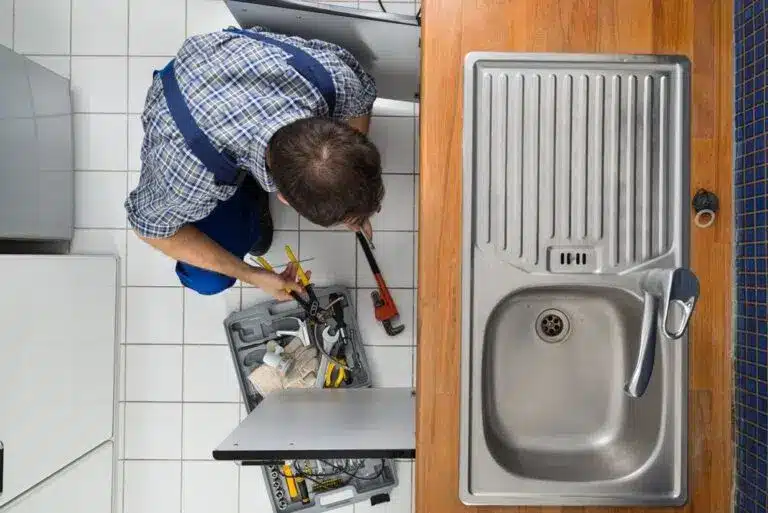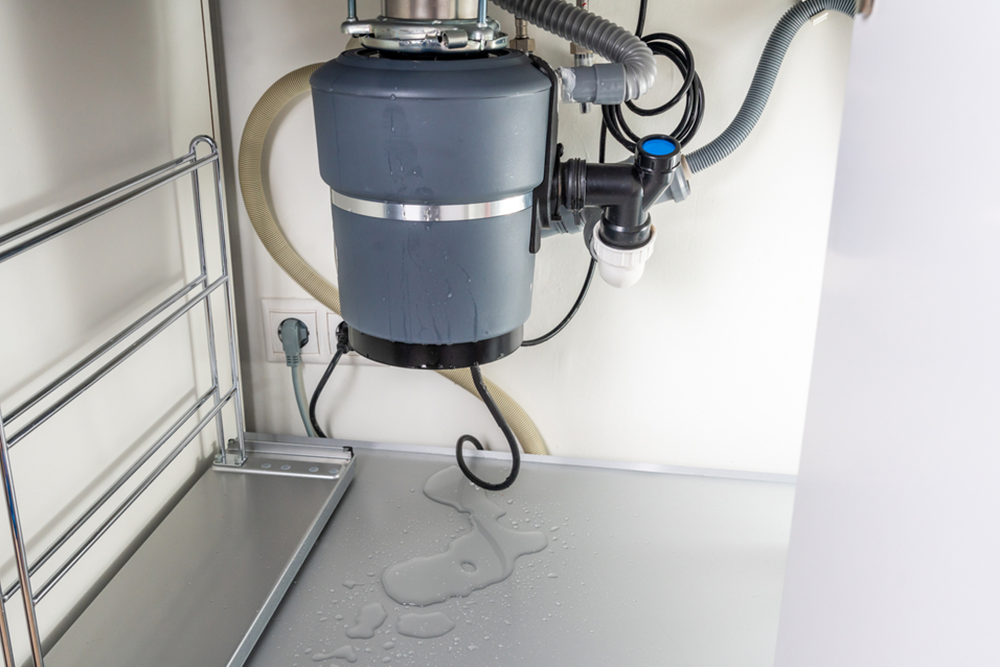Just about every person seems to have their private opinions when it comes to Why Is .

Garbage disposals are vital kitchen devices that help in throwing away food waste efficiently. However, a leaking garbage disposal can be an aggravating and untidy trouble to take care of. The good news is, several leaks can be repaired conveniently with a couple of straightforward actions. In this write-up, we will review just how to take care of a leaking garbage disposal properly.
Intro
Garbage disposals are set up under kitchen area sinks and are developed to shred food waste right into smaller items, allowing it to travel through the plumbing system conveniently. While these gadgets are normally dependable, leaks can take place gradually as a result of deterioration, loose connections, or damage to the system.
Typical Causes of Leakages in Waste Disposals
Worn Seals and Gaskets
Seals and gaskets play an essential role in stopping water from leaking out of the waste disposal unit. Gradually, these components can wear away, causing leaks around the disposal device.
Loose Links
The links in between the garbage disposal and the pipes system can become loosened in time, creating water to leakage out throughout procedure.
Fractures or Openings in the Disposal Device
Physical damage to the garbage disposal, such as splits or holes in the housing, can likewise lead to leaks.
Recognizing the Source of the Leak
Prior to trying to repair a dripping waste disposal unit, it is vital to identify the resource of the leakage. This can normally be done with aesthetic examination or by performing basic examinations.
Visual Assessment
Check the waste disposal unit unit carefully for any kind of signs of water leakage. Pay close attention to locations around seals, gaskets, and link factors.
Evaluating for Leaks
One means to examine for leaks is by running water through the disposal unit and looking for any visible signs of leak.
Devices and Materials Needed for Fixing a Leaking Waste Disposal Unit
Prior to beginning the repair work procedure, collect the necessary devices and materials, including a screwdriver, flexible wrench, plumbing's putty, replacement seals or gaskets, and epoxy or patching product for fixing cracks or holes.
Step-by-Step Guide to Fixing a Leaking Waste Disposal Unit
Shut off the Power
Prior to attempting any type of repair services, make sure that the power to the garbage disposal system is switched off to stop the threat of electrical shock.
Locate the Leak
Determine the precise area of the leakage and identify the cause.
Tighten up Links
Utilize a wrench to tighten any kind of loosened links in between the disposal unit and the pipes system.
Change Seals or Gaskets
If the leakage is due to worn seals or gaskets, get rid of the old components and change them with brand-new ones.
Patching Fractures or Holes
For fractures or holes in the disposal unit, use epoxy or a suitable patching product to seal the damaged area.
Testing the Garbage Disposal After Fixing
When the repair service is complete, test the garbage disposal by running water with it to ensure that the leakage has been dealt with.
Preventive Maintenance Tips to Stay Clear Of Future Leaks
To avoid future leaks, it is vital to execute regular maintenance on your waste disposal unit. This includes maintaining it clean, avoiding placing non-food things or tough things down the disposal, and regularly checking for leaks or various other issues.
Verdict
In conclusion, taking care of a leaking waste disposal unit is a fairly simple process that can be finished with fundamental tools and materials. By complying with the actions detailed in this short article and exercising precautionary upkeep, you can maintain your garbage disposal in good working problem and avoid pricey repair services in the future.
What to Do About a Leaking Garbage Disposal
A leaking garbage disposal often goes unnoticed until you confront a sopping cabinet, a foul-smelling puddle, or an audible drip-drip-drip from the unit. The fix can be frustrating, too, because the leak can stem from a number of components in the system. Fortunately, with a little sleuthing, you can zero in on the leak and—depending on the exact location—stop the icky oozing and repair the component that caused it. Worst case scenario, if it turns out that the garbage disposal must be replaced, installing a new one is a reasonable do-it-yourself task for those with basic plumbing skills. Read on to keep the cash you’d otherwise hand over to a pro.
Prepare to find the leak
Prior to testing the garbage disposal for leaks, unplug it at the wall outlet and turn off the power from the breaker box to prevent electrical shock. Then insert a watertight sink stopper into your sink drain and wipe the unit dry with a clean cloth. In any handy container, mix a few drops of food coloring into a few cups of water, and pour the dyed water onto the sink stopper to help you locate the leak.
Investigate the source
the top, where the disposal meets the sink drain the side, where the dishwasher hose or main drain pipe connects to the disposal or the bottom of the unit Inspect each of these locations while gliding a light-colored rag over the unit; the dyed water will readily show on the rag and reveal the location of the leak. If a leak isn’t immediately apparent, remove the sink stopper and pour a few more cups of dyed water down the sink drain, then check for leaks again. Leaks near the top of the unit are more likely to show themselves while the sink is plugged, while side and bottom leaks are more noticeable while the sink is unplugged.
The metal sink flange that sits directly inside the sink drain is typically sealed around the top with plumber’s putty (a clay-like sealant) and then secured from under the sink with bolts. If the plumber’s putty deteriorates, or the bolts loosen, the flange can no longer form a watertight seal between the sink drain and the disposal—which could cause a leak at the top of the unit.
To reseal the leaky flange, you must first detach the garbage disposal. Start by loosening the screws securing the main drain pipe to the disposal, then loosen the screws in the metal clamp securing the dishwasher hose to the disposal and detach the drain pipe and dishwasher hose from the disposal. Loosen the screws in the mounting ring that connects the disposal to the metal mounting assembly beneath the sink, then pull down the disposal and carefully set it on a clean, dry surface. Loosen the bolts in the mounting assembly with a wrench, then pull down the mounting assembly and set it near the disposal.

As a devoted reader about Garbage Disposal Leaking From Bottom, I imagined sharing that portion was a smart idea. Loved our content? Please share it. Help other people locate it. I recognize the value of reading our article about The Handy Guide To Fixing Your Garbage Disposal Leaking.
Call Today